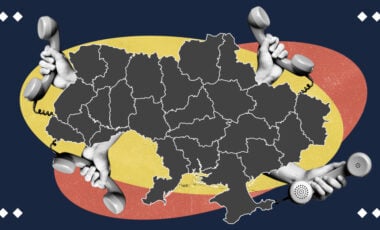Europe’s rivers run dry as scientists warn drought could be worst in 500 years

Crops, power plants, barge traffic, industry and fish populations devastated by parched waterways
In places, the Loire can now be crossed on foot; France's longest river has never flowed so slowly. The Rhine is fast becoming impassable to barge traffic. In Italy, the Po is 2 metres lower than normal, crippling crops. Serbia is dredging the Danube.
Across Europe, drought is reducing once-mighty rivers to trickles, with potentially dramatic consequences for industry, freight, energy and food production – just as supply shortages and price rises due to Russia's invasion of Ukraine bite.
Driven by climate breakdown, an unusually dry winter and spring followed by record-breaking summer temperatures and repeated heatwaves have left Europe's essential waterways under-replenished and, increasingly, overheated.
With no significant rainfall recorded for almost two months across western, central and southern Europe and none forecast in the near future, meteorologists say the drought could become the continent's worst in more than 500 years.
"We haven't analysed fully this year's event because it is still ongoing," said Andrea Toreti of the European Commission's Joint Research Centre. "There were no other events in the past 500 [years] similar to the drought of 2018. But this year, I think, is worse."
He said there was "a very high risk of dry conditions" continuing over the next three months, adding that without effective mitigation drought intensity and frequency would "increase dramatically over Europe, both in the north and in the south".
Germany's Federal Institute of Hydrology (BfG) said the level of the Rhine, whose waters are used for freight transport, irrigation, manufacturing, power generation and drinking, will continue dropping until at least the beginning of next week.
On Friday the water at the critical Kaub marker 50km downstream from Mainz – which measures navigability, rather than the water depth – fell below 40cm, the level at which many shipping firms consider it is no longer economical for barges to operate. It could fall to nearer 30cm over the next few days, the BfG has said.
Many barges, which carry coal for power plants and vital raw materials for industrial giants such as steelmaker Thyssen and chemical giant BASF, are already operating at about 25% capacity to reduce their draft, raising shipping costs up to fivefold.
A vital part of northwest Europe's economy for centuries, the 760 miles (1,233km) of the Rhine flow from Switzerland through Germany's industrial heartland before reaching the North Sea at the megaport of Rotterdam.
A total halt in Rhine barge traffic would hit Germany's – and Europe's – economy hard: experts have calculated that a six-month suspension in 2018 cost around €5bn (£4.2bn), with low water levels forecast to cost Germany 0.2 points of economic growth this year.
While the EU has said boosting waterborne freight by 25% is one of the bloc's green transition priorities, Germany is now working to divert it to rail and road – although between 40 and 100 trucks are needed to replace a standard barge load.
France's rivers might not be such key freight arteries, but they do serve to cool the nuclear plants that produce 70% of the country's electricity. As prices hit all-time highs, power giant EDF has been forced to reduce output because of the drought.
Strict rules regulate how far nuclear plants can raise river temperatures when they discharge cooling water – and if record low water levels and high air temperatures mean the river is already overheated, they have no option but to cut output. With Europe's looming energy crisis mounting and the Garonne, Rhône and Loire rivers already too warm to allow cooling water to be discharged, the French nuclear regulator last week allowed five plants to temporarily break the rules.
The almost dry bed of the Po near Piacenza.
In Italy, the flow of the parched Po, Italy's longest river, has fallen to one-tenth of its usual rate, and water levels are 2 metres below normal. With no sustained rainfall in the region since November, corn and risotto rice production have been hard hit.
The Po valley accounts for between 30% and 40% of Italy's agricultural production, but rice growers in particular have warned that up to 60% of their crop may be lost as paddy fields dry out and are spoiled by seawater sucked in by the low river level.
In the protected wetlands of the river's delta, near Venice, its high temperature and sluggish flow have reduced the water's oxygen content to the extent that an estimated 30% of clams growing in the lagoon have already been killed off.
Low river levels and high water temperatures can prove fatal to many species. In Bavaria, the Danube reached 25C last week and could hit 26.5C by mid-month, meaning its oxygen content would fall below six parts per million – fatal for trout.
Freight on the 2,850km of the Danube has also been heavily disrupted, prompting authorities in Serbia, Romania and Bulgaria to start dredging deeper channels while barges carrying mainly fuel for the power generators wait to advance.
Even Norway, which relies on hydropower for about 90% of its electricity generation, has said the unusually low levels of its reservoirs may ultimately oblige it to limit power exports.
Source: The Guardian




















































